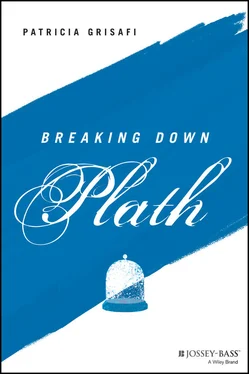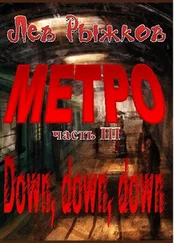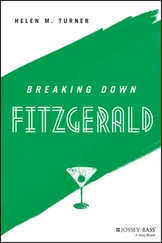Aurelia was a teacher, and Otto was a professor who specialized in bees. He even wrote an influential book, Bumblebees and Their Ways (1934). Sylvia had a brother, Warren, who was two years younger. This would be their family unit until Otto Plath's untimely—and ultimately preventable—death when Sylvia was eight.
Otto Plath suffered from diabetes but ignored his condition until his leg had to be medically amputated. Afterward, his health plummeted, his amputation became infected, and he died of complications due to diabetes. Otto's death would haunt Sylvia for the rest of her life.
Sylvia would later write about how idyllic her childhood had been until her father's death in the essay “Ocean 1212‐W”: “And this is how it stiffens, my vision of that seaside childhood. My father died, we moved inland. Whereon those nine first years of my life sealed themselves off like a ship in a bottle—beautiful, inaccessible, obsolete, a fine, white flying myth.” Ultimately, her father's death would shape Sylvia's relationships with men, religion, politics, and herself, and would be the basis for some of her most powerful poetry.
After Otto's death, Aurelia moved the family away from its home in the seaside town of Winthrop, Massachusetts, inland to the suburbs of Wellesley. There, Sylvia lived in a multigenerational home with her maternal grandparents. Aurelia always managed to make ends meet, but the family had to be frugal. Aware that she wasn't as financially privileged as other children in the neighborhood, Sylvia—already showing signs of precocious intelligence—became an overachiever and a perfectionist. She spent most of her middle and high school years winning academic awards and accumulating scholarships.
Plath started at prestigious Smith College in 1950 on a scholarship sponsored by writer Olive Higgins Prouty. Plath was keenly aware of class stratifications at the elite, all‐women's college. She put intense pressure on herself to be perfect. Writing in her journal on October 1, 1957, Plath addresses a “demon” who is in reality her “murderous self” who demands perfection: “Not being perfect hurts,” she writes. “This is the month which ends a quarter of a century for me, lived under the shadow of fear: fear that I would fall short of some abstract perfection: I have often fought, fought & won, not perfection, but an acceptance of myself as having a right to live on my own human, fallible terms” ( Unabridged Journals, 2000, p. 618).
This need to be perfect is a personality characteristic, but it's also a value very much encouraged during Plath's life. Throughout the 1950s, as we will learn further in the next chapter, in Plath's social circles there was a lot of stress on appearances and conformity—especially for women. Sylvia, always a savvy observer of double standards, participated in many of the rituals of college life at this time while criticizing them in her writing. She went to formal dances, had many dates and friends, and immersed herself in studies and activities. Well‐liked, incredibly bright, and fiercely ambitious, Sylvia Plath looked like she had everything going for her.
But mental illness is insidious. For someone with a predisposition to depression, as Plath had, it can feel like everything is wrong and will never get better. Mental healthcare was much less sophisticated in the 1950s than it is today, and conversations about mental health in general were often conducted in hushed tones, as if struggling with one's emotions was something about which to be ashamed. The stigma of mental illness prevented many people from getting the proper treatment. Women especially, who often were dismissed by male doctors, felt disempowered when it came to medical care, especially gynecological and psychiatric care.
Plath grappled with suicidal ideation and feelings of depression and worthlessness for most of her adult life. Her mental health struggles formed some of her most powerful poems. An understanding of Plath's mental health—and how she conceived of it—is valuable to any study of her work, but we need to be careful not to pathologize her or her poetry.
THE RISKS OF READING AUTOBIOGRAPHICALLY
It is tempting to read Plath's work as purely autobiographical, as several scholars have done in the past. However, as Plath studies evolve, we now understand that reading Plath's work from a solely autobiographical perspective poses problems and closes off the work from its larger contexts. We must always think of Plath as a writer who used autobiographical elements in her work and transformed them into art. In short, her real‐life experiences informed her art—but are not necessarily the only aspects of the writing itself.
While Plath mined her life for inspiration, her work stands on its own. Plath never intended to write an autobiography; she carefully chose poetry and fiction as her medium with a few short essays written toward the end of her life. “Rather than assume that Plath is an unusually autobiographical writer,” Plath critic Susan R. Van Dyne notes, “we need to understand that she experienced her life in unusually textual ways. In her letters and journals as much as in her fiction and poetry, Plath's habits of self‐representation suggest that she regarded her life as if it were a text she could invent and rewrite” (Van Duyne, 1993, p. 5). Plath kept journals. She composed letters. She wrote fiction. She crafted poetry. She was familiar with all mediums and made artistic choices fitting to each one. To only read Plath as an autobiographical writer would be to miss out on the myriad layers in her work. Therefore, readers should bear in mind the distinction between the speaker/narrator and the author when reading, and refrain from pathological narratives and unfounded mental health diagnoses.
In 1953, Plath's life took a series of twists that would ultimately lead to a suicide attempt. Aside from academic success (Plath was elected to Phi Beta Kappa and also learned she would be the editor of the Smith Review for her senior year), Plath won a guest editorship position at Mademoiselle magazine, which she held during the summer at its New York City offices. She and other winners were put up at a women's‐only hotel, The Barbizon, and were expected to fulfill their duties as well as put forward a positive face representing the magazine while touring the city.
Plath drew inspiration from this experience in her only published novel, The Bell Jar (1963). Aside from the novel, some letters, and scant journal entries, we don't know a lot about this time during Plath's life from Plath's own perspective. However, once she finished her editorship, returned home, and received a rejection from a Harvard University writing program she desperately wanted to take, her mental health seemed to take a dive.
Facing a long stretch of summer vacation at home with her mother and nothing to look forward to, Plath fell into a deep depression that was so severe it had physical effects. Unable to sleep, read, or write, Plath reached out for help. Her mother took her to a male psychiatrist, and that psychiatrist gave her improperly administered electroconvulsive therapy (ECT). In The Bell Jar , Plath would compare the experience to how one must feel being electrocuted and tortured. This event would haunt Plath and her writing for the rest of her life, coming up again and again as an image and metaphor in her poetry.
Plath's condition continued to deteriorate. On August 24, 1953, Plath consumed a bottle of pills and hid in a crawlspace in the basement. She was unconscious for two days, during which an exhaustive search took place throughout the greater Boston area. Her disappearance made the newspapers: “Beautiful Smith Girl Missing at Wellesley,” read the headline of The Boston Daily Globe . “Mrs. Aurelia S. Plath, of 26 Elmwood Street, said her daughter apparently left the house at 2 p.m., leaving a note saying she was ‘taking a long walk’ and would ‘be back tomorrow.’”
Читать дальше












